How to pull change instead of pushing through
By Puk Falkenberg, 18. February 2019
Future of Work requires a more frequent adaptability and thus more frequent change than before. If you want to stay relevant to both market and employees, you have to adapt. Therefore, Change Management must be a fundamental feature that is built-in and not bolted-on. We need to strive for a kind of Change Management that fits the mindset of Future of Work today.
Recently I wrote about how change should be built in as a part of your organizational core instead of just bolted on. This means that you should be able to focus on a problem, a solution and the change that comes with both. Innovation always drives change along and if we need to be innovative as a core, we also need change to be a part of this core.
When is it pull and when is it push?
We need to look at the difference between pushing and pulling change. Pushing change through sounds a lot like command-and-control, while pulling change sound more like driving and engaging someone to follow. You walk in front as a role model, not standing behind pushing people off a cliff – which is what many employees feel when being pushed into change they don’t understand: They feel forced and are afraid of not mastering the new situation. This creates anger and anxiety, at worst.
The push approach is:
- Oriented towards crisis and creating a burning platform
- Ruled by command and control
- Closely monetarized in every step
- Forced through and upon every employee (and others around the organization)
- Trying to convince everyone that the loss of doing nothing is greater than changing
- Fundamentally build on necessity and chaos
- Exposes fear of failure.
The pull approach is:
- Oriented towards opportunities
- Driven by a common vision co-created instead of dictated
- Answering the question: “What’s in it for me – and us?”
- Assuming that people are willing to as well as want to change
- Focus on building and strengthening the organizational capabilities
- The goal of the change itself is organizational agility, flexibility and a culture of continuous development and innovation
- Embraces anxiety of the new situation, and creates learning moments.
Even if you manage to build an organizational core where the ability to change is present, there will always be a need for the pull approach. Organizations who reaches the state of ‘change enablement’ (that fits with teal, described further down) will experience natural human reactions on change that must be understood and honored. Uncertainty and insecurity in the future, worry about mastering new skills as well as changing routine behavior and habits.
This means that you’ll always need pull even when you are a teal dot that have created a safe space for change enablement, someone needs to walk in front as a role model and create a path for the team, helping them move forward and succeed.
At what cost are we willing to push through?
It’s not worth it, risking employee’s unhappiness, stress, resistance, and active disengagement. It’s not worth paying and investing in something that will push your people off a cliff. But it’s worth investing in your organizations capability of being able to handle change now and in the future. It is worth taking the time to pull, drive, and engage in change.
We have mentioned Frederic Laloux’s five stages of organizations a few times before, and I would like to take these stages into this conversation as well. The five stages give us clear lines on how organizations work, are organized, the innovative capabilities as well as an idea of their culture. This is needed when going one step further looking at the approaches of push and pull.
The steps you need to take to become better at pulling change
Knowing the traits of each stage of the organization (click here to open a picture with definitions), together with the definition of push and pull, it becomes clear that pull is much more natural in a teal organization, as are push in a red one.
What you need to do is to get insight on each of these following steps before being able to start initiatives of a more pulling character:
- Get to know your organizational stage. By assessing the traits of each stage you’ll have an idea of the combination of push and pull needed in your organization.
- Next up you need to asses a recent change you found yourself in. Which mechanisms were used? Were you involved? Did you co-create the vision and/or was the focus on strengthening organizational capabilities?
- Then look at your methods of conducting change. Are these bolted on to a given project or built-in, in everything you do?
When this is done, you need to figure out how to make adjustments in the relevant direction. This is an area where it’s hard to be specific without knowing the context of your organization. I’ll advise you to take a deep dive into our toolbox for help or involve more people in your organization – I bet they have great ideas on how to do things differently.
And should you still be lost in how to get going I’m always up for a cup of something hot ;)
Want to know more?
Send me an email
and I’ll get back to you!
The world and your employees have changed.
Do you want to keep up
– and shape the future?
Looking for a thought-provoking speaker
with knowledge of the future
and how to turn it into daily life?







